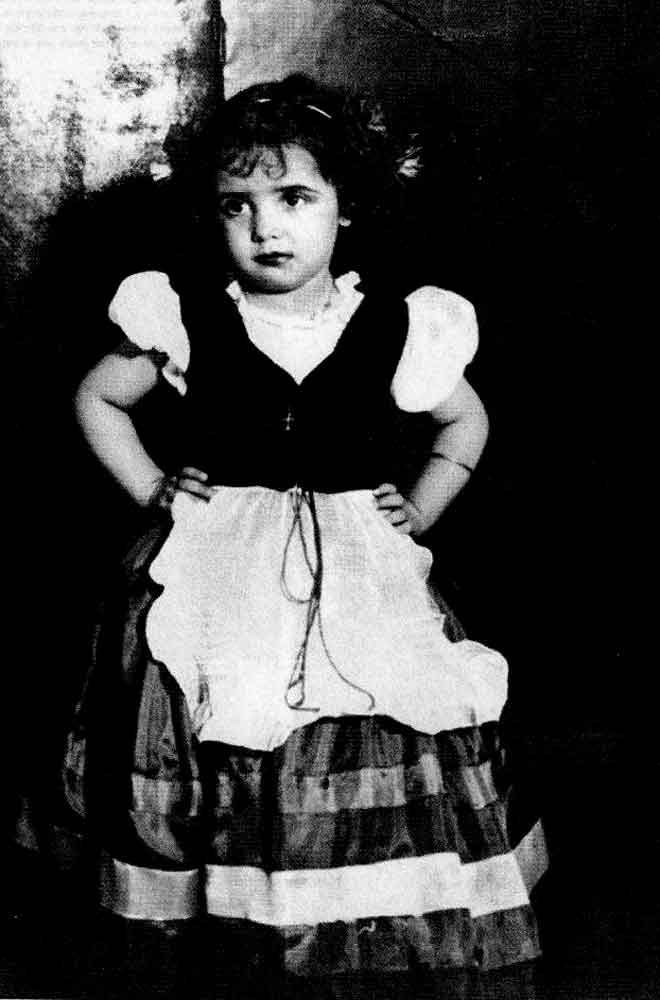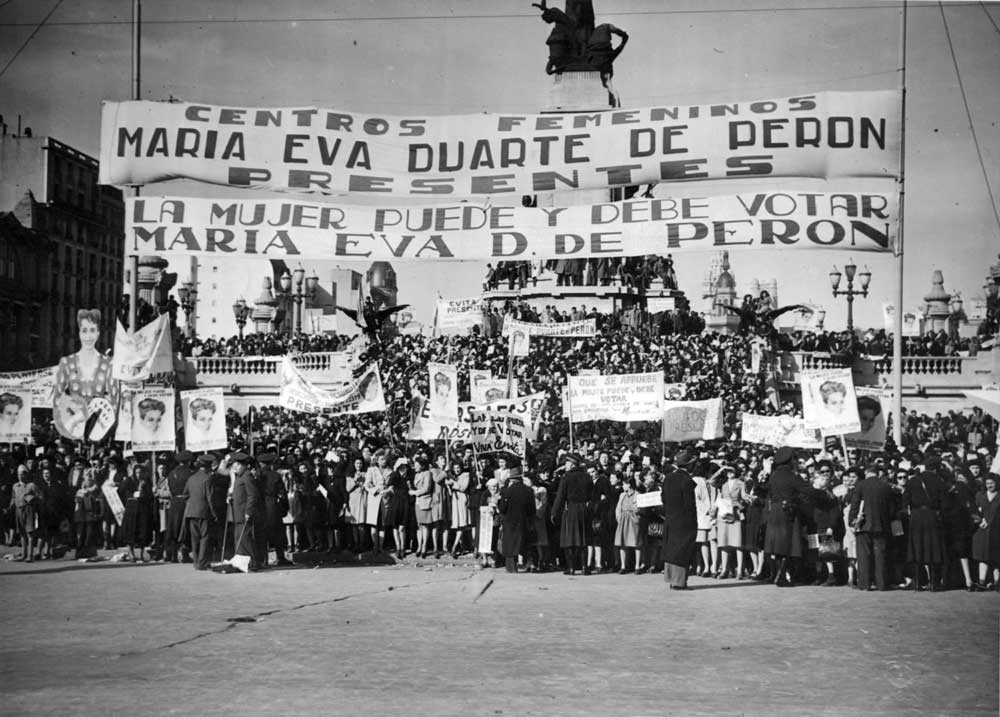
She was never an elected official of the Argentine government, yet her contributions in the political sphere ranged far and wide across the country. She lived her life dedicated to her country and the upliftment of the people of Argentina and, in the process, became a beloved icon of Argentina through her activism and philanthropy.
This is the celebrated story of Eva “Evita” Perón, who won the hearts of the Argentine people and changed the story of Argentina forever.
The Early Life of Eva Perón

Born María Eva Duarte on May 7, 1919, Eva spent her childhood in the city of Junín near the capital, Buenos Aires. She was the youngest of five children. Her mother, Juana Ibarguren, was descended from Basque immigrants and was a mistress to the wealthy rancher Juan Duarte. When Eva was just one year old, her father left her and her mother and moved back to his family. Eva and her mother lived in abject poverty in the dusty village of Los Toldos in the Pampas.
With the financial help of Eva’s older brother, however, Eva and her mother were able to afford a boarding house. As a child, Eva became interested in acting, and in October 1933, after starring in a school play, she decided that she wanted to become an actress.
Get the latest articles delivered to your inbox
Sign up to our Free Weekly NewsletterAt the age of 15, Eva started traveling to and spending more time in Buenos Aires, where she pursued her career as an actress, landing jobs on stage as well as on the radio. It was the latter in which she found particular success, voicing characters in radio dramas.
Eva & Juan Meet

In early January 1944, a devastating earthquake ripped through the town of San Juan, killing 10,000 people. The Secretary of Labor, Juan Perón, organized a gala event as a fundraiser for the disaster victims. His vision for the event was that it would celebrate Argentina’s artistic talent. Actors and actresses were invited, along with artists and other people in creative fields. Eva Duarte was invited to this event. Twenty-four years old at the time, she met Juan Perón, who was 48, and they instantly fell for each other.
As Juan Perón’s girlfriend, Eva began taking an interest in politics and formed a broadcast performer’s union at her boyfriend’s suggestion. As a radio personality, Eva created a program in which she spoke about the work of Juan Perón championing the working class, bringing much popularity to the politician.
1944 was also the beginning of a dangerous time in the Argentine government. Machinations between elected officials and the military began to threaten the peace. The president, Pedro Pablo Ramírez, was forced to resign (by signing a draft written by Juan Perón himself). Fearing Juan Perón’s rise to power, his opponents had him imprisoned, whereupon hundreds of thousands of people took to the streets to demand his release.
On October 18, 1945, a day after he was released, Eva and Juan got married, and the following year, they campaigned together in Juan Perón’s bid for the presidency. He won the election in a landslide, and Eva Perón became Argentina’s First Lady.
Eva as First Lady

In 1947, Eva Perón toured Europe, winning widespread support and fame. Her “Tour of Goodwill” was designed to promote Evita as a charitable, generous person. She visited Francoist Spain, which no other politician was willing to do, as Spain was the last bastion of Fascism in Europe. There, she handed out money to poverty-stricken children. Eva Perón became loved the world over and appeared on the cover of Time in July 1947.
Charity was one of the hallmarks of Eva Perón’s life. Before she rose to prominence, almost all charity was undertaken by the Sociedad de Beneficencia, an organization created in 1823 that traditionally cared for the orphans of Argentina. By Evita’s time, however, it had eroded into a rich socialite club of older women. It was they who were supposed to contribute all the funds to the society, which the government now funded. It was also these ladies who traditionally elected the First Lady of Argentina. Being mistrustful of Evita’s impoverished background, they refused to do so. In light of this non-event, the Sociedad had its funding cut, and money was instead channeled to Eva Perón’s own Eva Perón Foundation.
Evita poured her life into the charity organization and personally oversaw the running of almost everything. At its height, the foundation employed 14,000 workers and made huge strides in reducing inequality in Argentina. Eva Perón took it upon herself to visit those suffering in poverty, spending much time with the sick and dying. Her dedication to the latter earned her immense popularity among the working class, and she was seen as a saint.

Evita, and indeed the whole foundation, provided phenomenal benefits to Argentine society. Through the foundation, scholarships were given out, houses and schools were constructed, and an enormous amount of goods were distributed to the poorer people of Argentina via giant warehouses built for the purpose. The foundation collaborated whenever and wherever possible on any and all projects designed to uplift the less fortunate sectors.
Through her political activities, Eva Perón also inspired a massive surge in support for women’s suffrage and social equality for women. It was through these movements that women were given the right to vote. The bill was passed into law, signed by Juan Perón, and symbolically given to Eva. Although not a feminist, Evita inspired many women to get invested in politics at all levels.
The 1952 Election

In January 1950, Eva Perón fainted in public and was rushed to hospital. It was reported that she had had to undergo an appendectomy, but the truth that was kept from the public was that she had advanced cervical cancer.
In 1951, Juan Perón sought re-election, and he chose Evita to stand as his vice-presidential candidate. Much of the opposition was appalled by the idea of Eva Perón becoming president in the event of her husband’s death. Nevertheless, this opposition paled in comparison to the support which Juan and Eva received. On August 21, 1951, trade unions organized a rally in which a crowd of two million people gathered in Buenos Aires to show support for the Juan and Eva ticket. It is estimated that this was the largest gathering in history for a female political figure.
Eva Perón declined to run as vice president, mainly because she was very ill. Despite her deteriorating health, Eva Perón kept her public face. She had a frame made which, under her dress, allowed her to stand upright. By 1952, she was unable to stand without support.
Eva Perón’s Death

In the last few months of her life, Eva Perón was in excruciating pain. Evidence on her remains suggests she even underwent a prefrontal lobotomy in an attempt to alleviate the symptoms of her illness. She also had a hysterectomy and suffered chemotherapy, but it was to no avail. On Saturday, July 26, at 8:25 in the evening, Eva Duarte Perón passed away.
The entire country came to a halt, and mourners filled the street. Massive crowds gathered to get a glimpse of Evita’s body as it was transported to the Ministry of Labor. Several people were even crushed to death in the surging crowds, and thousands were treated for injuries.
Eva Perón was given a state funeral and a full Catholic mass. The entire country ran out of flowers, and more had to be imported from Chile. Memorials were held all over, including one in Helsinki, Finland, where the Argentine Olympic team was at the time.
After the funeral, her body was embalmed, although it was unlikely this would have been her wish. Juan Perón had a huge memorial constructed, but before it could be finished, he was overthrown by an anti-Perónist junta and had to flee the country. Juan could not secure his late wife’s body, so it was removed. Its whereabouts remained a mystery until 1971, when the military discovered that her body had been buried in a crypt in Milan, Italy, under the name “Maria Maggi.”

Juan Perón, living in exile with his third wife, Isabel, had the body transported to his home in Spain, where he kept and maintained it. After Juan’s return to Argentina, he became president again, and Isabel became the vice-president. In 1974, Juan died in office, and Isabel became president. She had the body of Eva moved back to Argentina, where it was displayed next to the body of her late husband.
A leftist-Perónist group called Montaneros negotiated the release of Eva’s body, and she was finally put to rest in the Duarte family tomb in La Recoleta Cemetery.
Throughout Eva Perón’s short life, she used her influence to improve a huge section of the Argentine population. Her love for children won her widespread recognition, and she was instrumental in gaining women the right to vote. She was dedicated to improving the lives of workers and those who had to struggle for a living. Today, she stands as an icon for feminism, equality, and humanitarianism across the world, and her life has been the inspiration for successive political movements and media portrayals of her that reflect the good in humanity, including the 1996 blockbuster Andrew Lloyd Webber hit “Evita,” starring Antonio Banderas and Madonna as the eponymous character.
Her legacy is active in Argentina to this very day, where the landscape of Argentinian politics is shaped by the Peronista movements that seek compassionate governance across the country.








